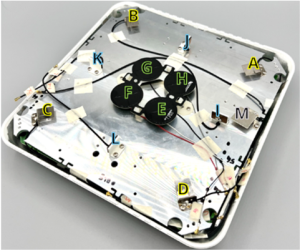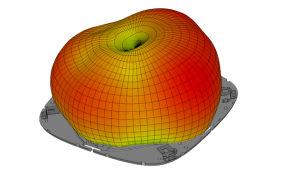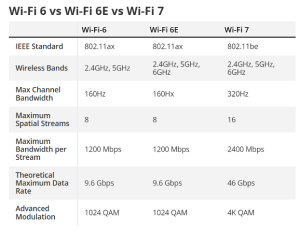Enterprise networks
Increased Network Capacity and Throughput
Wi-Fi technology is continuously evolving to meet the explosive growth in network traffic. The adoption of 6GHz spectrum in Wi-Fi 6E was a major step forward and extended the benefits of 802.11ax into the 6GHz frequency band. In 2024, the market will see the roll-out of Wi-Fi 7 enabled access points that increase peak data rates and network capacity, along with lower latency which is required for extended reality (XR) applications.
Wireless networks must evolve to meet the use cases and demands of XR in the Enterprise. Remote work, collaboration across teams, virtual events, and immersive training will drive innovation in XR experiences.

Wi-Fi 7 enables several new features designed to support bandwidth intensive use cases in dense Wi-Fi deployments.
Wi-Fi 7 peak data rates can exceed 40 Gbps due to 320 MHz channel bandwidth and use of the 6 GHz spectrum.
Advanced modulation scheme using 4K QAM boosts the peak data rate compared to prior generation 1K QAM modulation.
Antenna Company’s Wi-Fi 7 enterprise antenna reference design features a compact design that enables size reduction of enterprise access-points by 20% or more, without sacrificing antenna system performance.
The antenna system supports concurrent operation of 5GHz and 6 GHz radios, while achieving cross-pair antenna isolation of greater than 40dB.
In addition, options are available to include other radio functionality such as GNSS or UWB for indoor positioning and real-time location services.



Wi-Fi 7 MIMO antenna system features:
- Low input impedance essential to achieve peak rates during 4K-QAM operation
- Omnidirectional pattern in the azimuth plane, ensuring uniform coverage
- Robustness against antenna de-tuning from the system environment
Even with the roll-out of Wi-Fi 7, there is an ever-increasing demand for more bandwidth. Like Wi-Fi 6E, the Wi-Fi 7 standard supports the 6 GHz (5.925 to 7.125GHz) spectrum. When combined with wider channels and 4K QAM operation, a greater than 4x improvement over Wi-Fi 6/6E is achieved.


